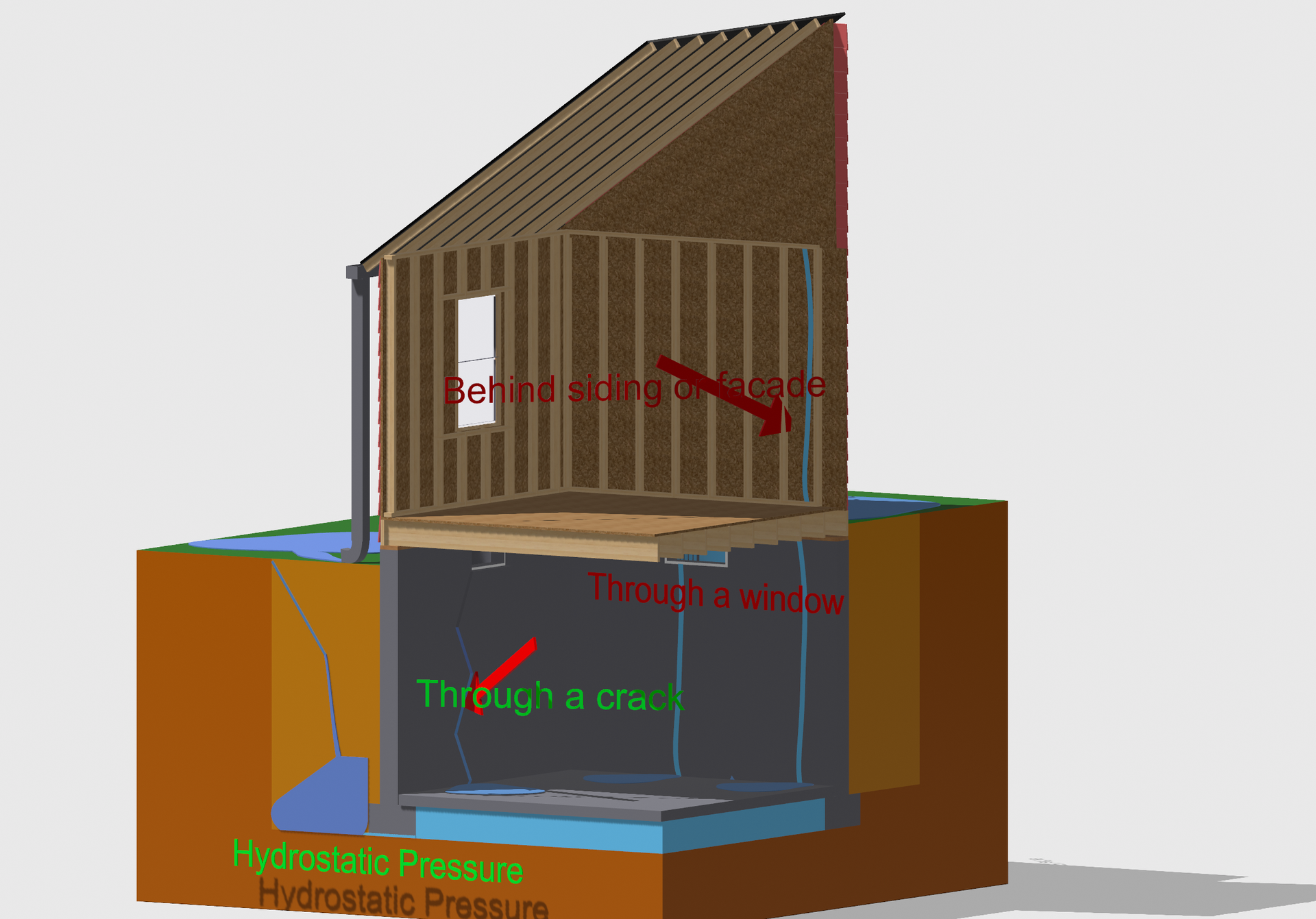How did water get in my basement?
That is probably the second most often asked question in our industry (just slightly behind "how much will it cost?"). But that question (and its answer) is just the beginning of a much larger issue that you need to understand in order to make a good choice to protect your family. Water is certainly the first step towards an unhealthy environment in your home, but the moisture and other soil gases that come along for the ride are equally dangerous, and need to be given their due respect. But in order to understand how it all happens, we need to go back to the very beginning of when your house was first built.
Clay Bowl Construction
Any time a structure is placed into the ground (over a basement or crawlspace), it is built using what we call the 'Clay Bowl Construction Method'. The short version is this. When they built your house, the first thing they did was dig a giant hole in the ground to place your basement or crawlspace in. We call this hole the Clay Bowl. But the hole HAD to be significantly larger than the actual basement or crawlspace so that the builders had room to work and get their tools and materials in and out. After the foundation was built, they backfilled the extra space with soil (hopefully), and they might have even compacted it abit. But they are not able to compact it to the same density of the soil that was undisturbed just a few feet away. So that creates a pocket of LOW DENSITY soil right up against your foundation. Since water always seeks the path of least resistance, it will always move from a high density area towards a low density area. So your foundation sits in a clay bowl that is essentially a magnet for water. Could builders do something to permanently prevent this water from getting into your basement? Yes, they could...but they don't. Even today builders typically do the least amount required, which is NOT enough to guarantee a dry basement for the life of the structure.


